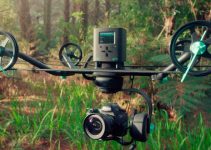Now that the Komodo is out of beta and the black editions are finding their way into customer’s hands, there are a lot of first time Red users gaining access to the advanced tools that Red has implemented in their camera systems.
The Komodo is the most affordable Red Digital Cinema Camera ever released. Though it may not look like it lives up to the specs of the Sony FX9 or C300 Mark III on paper, the images that cinematographers are able to capture with this camera are absolutely stunning.
But Red doesn’t do it exactly like everyone else, and understanding how to properly set, expose, and adjust-in-post what you are shooting is crucial to getting the most out of this camera. Recently, we posted this tutorial from Red for the best practices for working with R3D files in DaVinci Resolve.
Now, we’re leaning on the knowledge and experience of Justin Phillip to help understand the fantastic exposure tools that RED includes in all of their cameras to let your work live up to its fullest potential.
Histograms, Goal Posts, and False Color
At this point, almost every camera (even FilmicPro on the iPhone) has some form of a video scope to assist us in exposing our images properly.
Conventional wisdom tells us that we should ETTR our images – if you’re unfamiliar with ETTR (Expose To The Right), it essentially means that we should let in as much light without clipping, and adjust the image back down in post to eliminate noise – but this isn’t how Red recommends you work with their cameras.
Histograms are based on IRE values, which is a relative scale based off of the reflected light and does not represent the raw image data from the sensor itself. On the Komodo, you can access the RBG Histogram by tapping on the settings box on the camera’s top LCD panel.
The histogram is good for a quick reference, but the tools you should be paying the most attention to are the ‘goal posts’ in the box to the left of the histogram.
The goal posts at the bottom light up when 2% of the the Red, Blue, or Green are underexposed, and the goal posts on the top light up when 2% of the pixels are overexposed.
Red cameras are more forgiving when it comes to recovering underexposure than they are overexposure, so you’ve really got to watch to make sure your image isn’t blown out!
False Color
If you really want to see what is going on with your raw image data, you need to turn on false color. The Komodo can display two different type of false image data: exposure, and video.
Video is based on IRE values just like the histogram, and Exposure is a representation of the raw image data.
Purple represent underexposure, Red represents overexposure and Green is middle grey.
Native ISO
Red cameras don’t have a native ISO the way a Pocket 6k camera or a C300 III does. Those manufacturers have set a native ISO based on luminance values, noise, and whatever other marketing considerations they determined.
Red cameras see ISO more as what they refer to as a ‘floating LUT’ or ‘FLUT’. Adjusting the ISO on the Komodo is visible on the histogram, but you’ll notice the goal posts and exposure false color are unaffected because the light hitting the sensor remains the same.
The only way to truly increase exposure on the Red (or really any camera) is to let in more light by opening up the lens, decreasing the shutter speed, or brightening up the shooting environment.
For best practices, the majority of Red shooters say to leave your ISO set to 800, but again the ISO of a raw sensor is essentially locked.
We All Make Mistakes
Red recommends that your exposure be as technically accurate as possible when filming with the Komodo or any of their cameras, and leave creative exposure choices for post production.
To be honest, I normally never read the manual so learning there was a major difference in the false color screen and IRE values had me wishing I had taken the time to learn more before my first shoots on Red. But like all things, I muddled my way through it and everyone seemed happy in the end.
From now on, I’ll be keeping my eye on those settings and making sure my images are as accurate as possible. This little Komodo camera sure can do a lot, and I can’t wait to make full use of it!
[source: Justin Phillip]
B&H Order Link:
KOMODO 6K Digital Cinema Camera (Canon RF)
Disclaimer: As an Amazon Associate partner and participant in B&H and Adorama Affiliate programmes, we earn a small comission from each purchase made through the affiliate links listed above at no additional cost to you.




